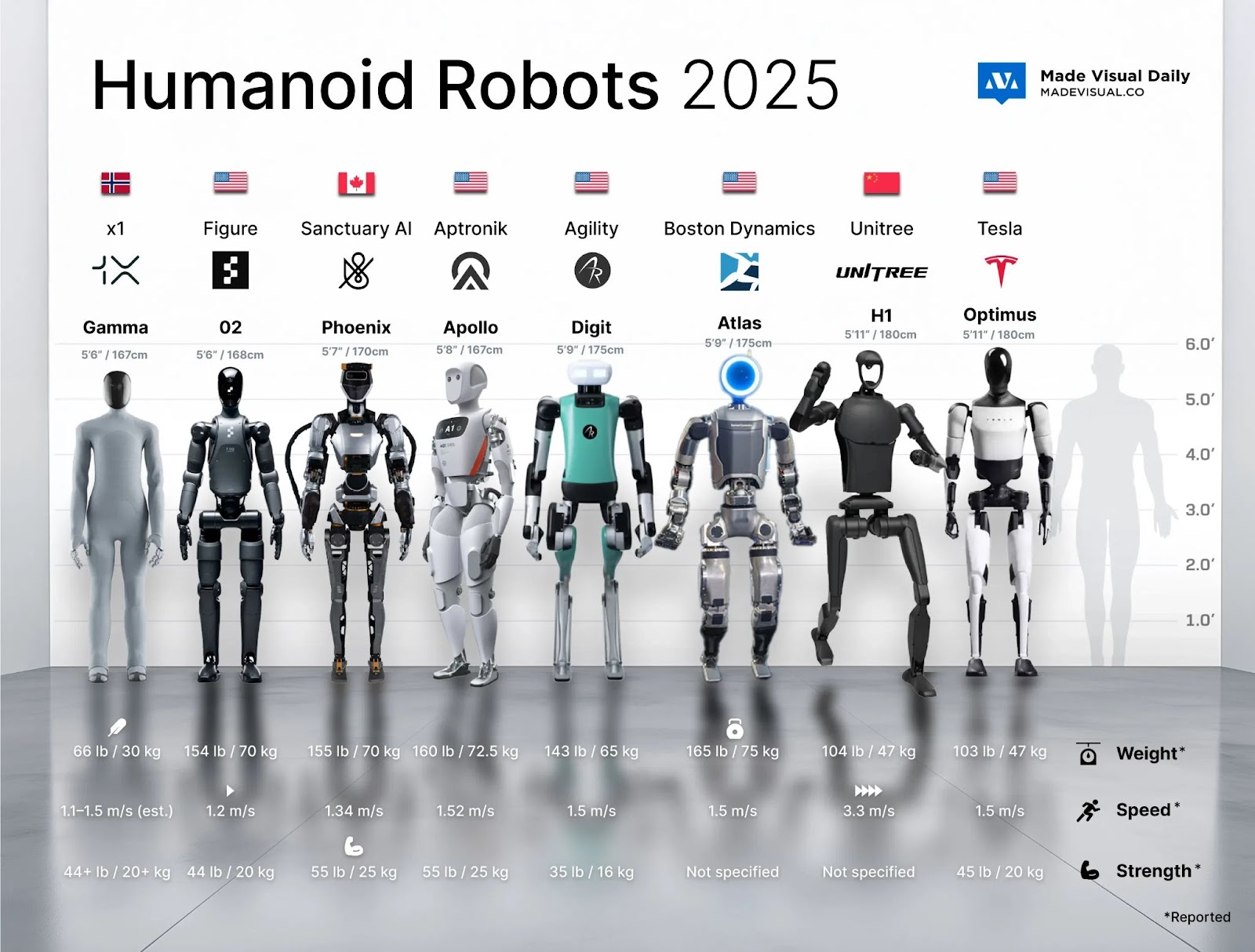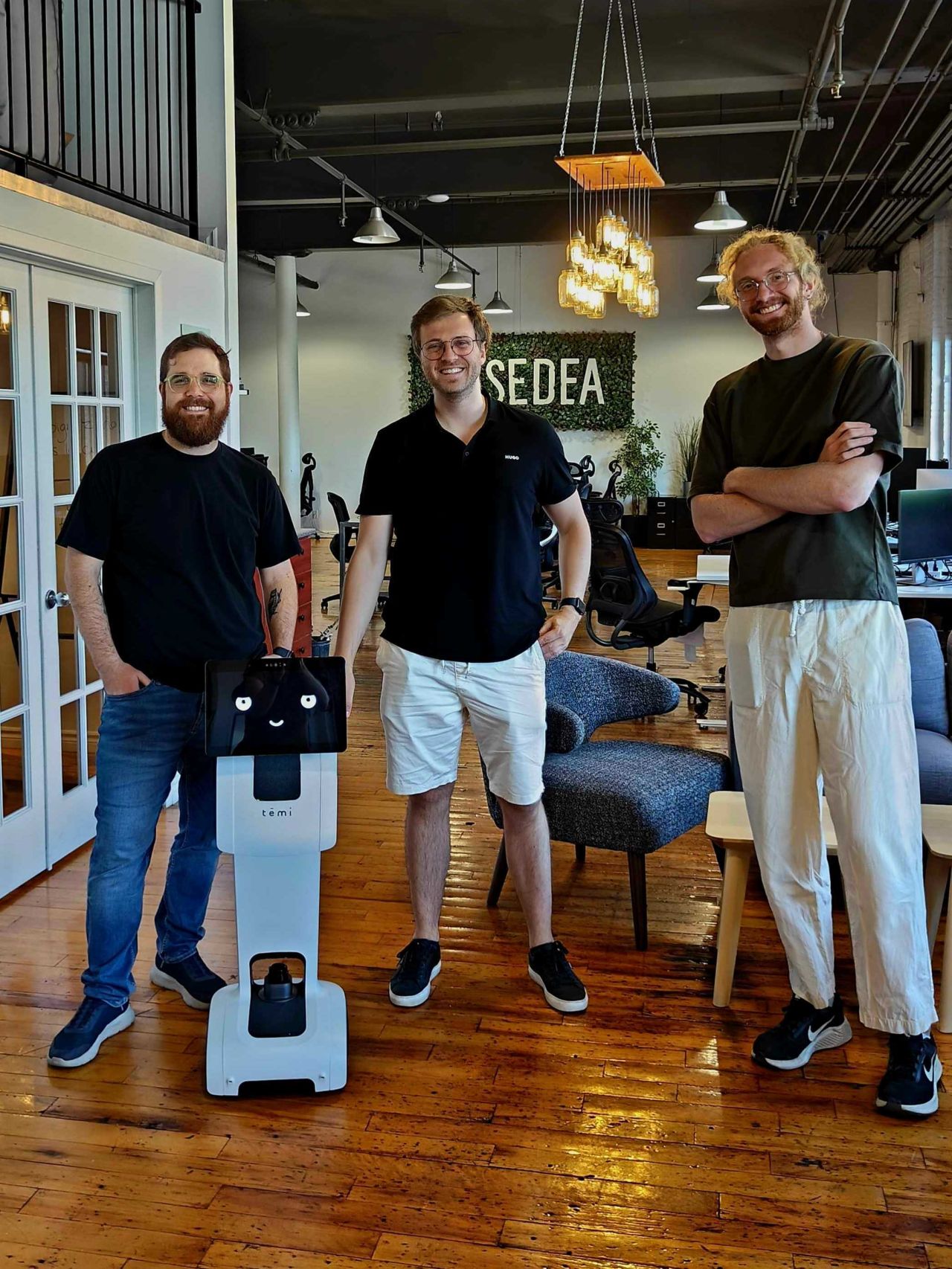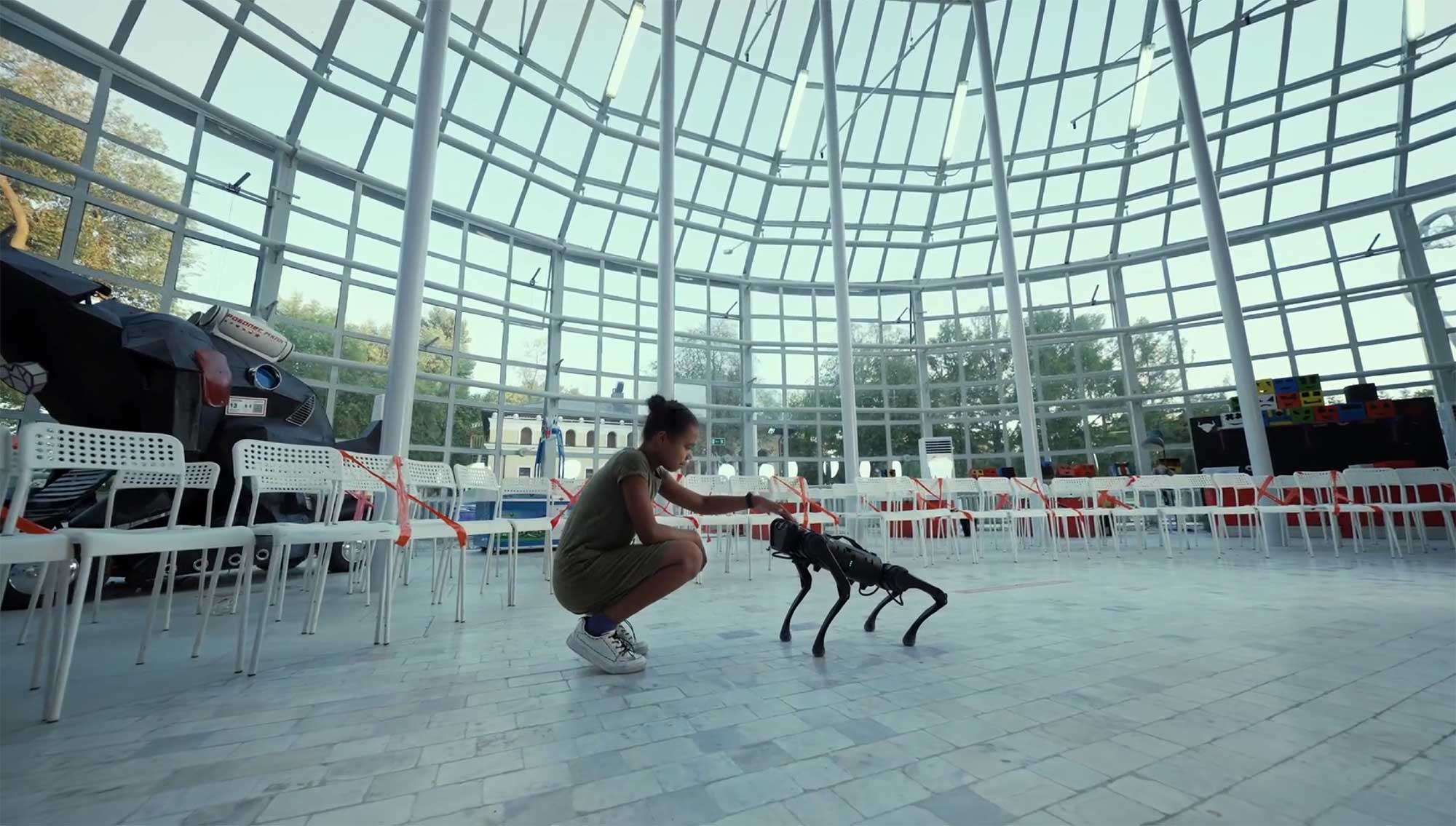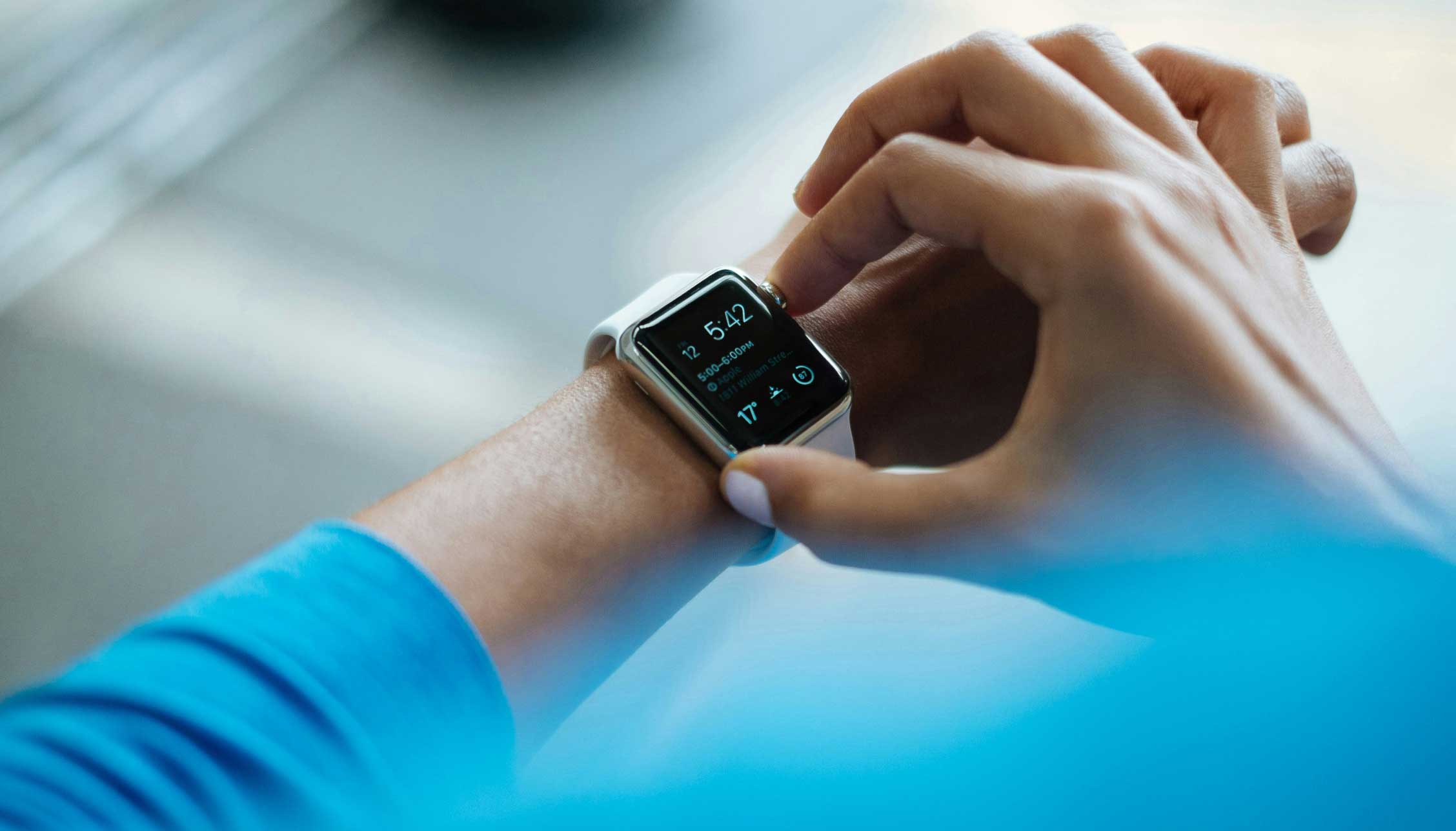Innovation
The future of robotics: expert insights – part 1
Robotics is no longer a futuristic concept. It’s becoming part of how we work, produce, and interact every day. At Osedea, we don’t just experiment with technology. We build custom digital solutions that combine robotics, AI, and software to solve real business challenges.
As a Boston Dynamics partner, we’ve explored what Spot, the agile quadruped robot, can do in industrial settings. But our expertise goes far beyond one platform. Whether it’s humanoid robots, robotic arms, or service companions, we help organizations make robotics work for their needs.
And the stakes are high. According to Morgan Stanley, more than one billion humanoid robots could be employed by 2050, taking on tasks that humans may find undesirable or unsafe. This massive shift shows how quickly robotics is moving from experimental to essential.
To dive deeper into where the field is heading, we sat down with Robin Kurtz and Hugo Turlet from our robotics team to share their perspective on what excites them most about the future.
Humanoids (e.g., Atlas, Figure 01, Carbon)
Q: Humanoid robots are gaining traction. What excites you most about their future potential?
Robin: “I think it’s fascinating to see some of the more affordable options emerging. While there are pros and cons to less expensive robots, I hope this trend lowers the barrier to entry. Companies like Figure are showcasing their F.02 using Helix, which can even do laundry. The big question is whether it will be accessible to most households.”
Hugo: “Humanoids are impressive because of their science-fiction appeal, but it’s still hard to predict their exact use cases. Beyond research and development, their main goal will be the same as other robots: to improve human life. The advantage of humanoids is that they resemble us, so they can adapt to a world built for humans.”
Q: Which humanoid projects are setting new standards in robotics?

Robin: “Boston Dynamics and Atlas are impressive for industrial applications. They don’t release many videos, but when they do, it’s remarkable. I also have faith in Figure’s F.02 for household applications, though I’m still unsure about having a robot walking around my home.”
Hugo: “I also have a soft spot for Boston Dynamics! Spot’s fluidity and robustness are incredible, so I expect Atlas to match that quality.”
Q: What environments will general-purpose humanoids impact most?
Robin: “Industrial use cases are where we’ll see the biggest impact. Boston Dynamics paved the way with Spot for dull, dirty, and dangerous jobs; Atlas is right behind.”
Hugo: “Exactly. Tasks that are physically demanding or too complex for fixed robotic arms will be handled by humanoids, easing daily human workloads.”
Service & Companion Robots (e.g., Temi, Pepper, Moxie)
Q: Service robots are becoming more capable. What use cases are most compelling?
Robin / Hugo: “The ones we haven’t thought of yet! Many off-the-shelf robots handle specific tasks, but what drives our work at Osedea is creating custom applications that solve problems in new ways.”
Q: How do you imagine these robots evolving in healthcare, hospitality, or education?
Robin: “As they become more versatile, adoption will grow. In healthcare, robots can take over dull, dirty, dangerous, or expensive tasks, allowing humans to focus on creative, meaningful work. Balancing automation with the human aspect will remain key.”
Hugo: “These robots aren’t widely used for emotional support yet, but there’s potential. People in hospitals or care homes could benefit from robotic companions. If AI like ChatGPT can provide support virtually, why not in physical form?”

Q: Are there any service robots you find particularly inspiring?
Hugo: “Not yet in daily life. This niche hasn’t exploded because people still prefer human interaction for support. We’ll need time for mindsets and lifestyles to adapt.”
Arms & Manipulators (e.g., Kinova Gen3, UR5e, Franka Panda)
Q: What breakthroughs in robotic arms excite you most?
Robin: “Manual guidance is becoming standard for cobots: an operator guides the arm through a movement, which it then repeats autonomously. Coupled with vision systems, robotic arms are more versatile, especially on mobile platforms.”
Hugo: “Robotic arms are among the most known and longstanding types of robots. Their precision, reliability, and robustness are remarkable. Some surgeons in New York can now operate on patients in Europe remotely—tasks once impossible without these tools.”
Q: What makes a robotic manipulator collaborative and user-friendly?
Robin: “Vision-based manipulation takes arms from effective to truly impactful for automation.”
Hugo: “Years of trial and error, along with human acceptance, have made them popular.”
Q: How can lightweight or assistive robotic arms contribute to accessibility and care?
Robin: “Companies like Kinova pioneered light, precise movements for medical and assistive applications. Safety and a gentle touch are critical in non-industrial settings.”
Hugo: “They enhance independence for people with reduced mobility—helping with eating, dressing, or grabbing objects. Collaboration with human assistants allows for more personalized and dignified care.”
Key takeaways
The robotics revolution isn’t on the horizon anymore, it’s already here. Humanoids are stepping into spaces designed for humans, quadrupeds are exploring hazardous environments, and robotic arms are driving efficiency in factories. Across industries, robotics is already reshaping the way we work.
At Osedea, we believe that the organizations who embrace this shift early will set themselves apart. By combining robotics with AI and software, the possibilities are vast. The real question is no longer if robotics will transform work, but how quickly you’ll be ready to make it part of your reality.
These insights set the stage for part 2, where we’ll explore mobile robots, educational platforms, and robotics in extreme environments, along with emerging trends like AI and reinforcement learning.
If you’re exploring how robotics could fit into your operations or want to discuss a potential project, contact us. Our team is ready to help you bring innovative robotic solutions to life.


Did this article start to give you some ideas? We’d love to work with you! Get in touch and let’s discover what we can do together.



-min.jpg)








